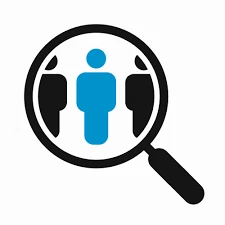
Partner Article
How to identify hidden vulnerable customers using your customer data
This is an uncertain time for many people. As a result many organisations such as utility companies, financial services, local government etc have been asked to play their part by communicating clearly and supporting their customers as much as possible. For utilities for instance, keeping people on supply, making sure they have warm homes and do not face additional financial or other stresses about their energy supply has been classified by the government as essential.
Suppliers are therefore putting in place support measures for people on prepayment meters, people and families who need to self-isolate or take steps to reduce social contact, and people who may otherwise be in vulnerable situations.
The problem, however, is how to identify who is vulnerable.
The first port of call is the NHS’ shielded patient list (formerly known as the vulnerable patient list). Initially 900,000 patients were added to the list by a national algorithm that identified people considered vulnerable including those who remain on long term immune suppression therapy, people with specific cancers or severe respiratory problems. People with rare diseases and women who are both pregnant and have significant congenital heart disease. The list has subsequently been increased to around 1.3 million people following a request to GPs, hospital doctors and the general public to add people to the list that had not been identified by the algorithm.
Of course this list only includes people that are considered vulnerable due to ‘underlying health issues’, however, organisations have been asked to protect all vulnerable customers. But vulnerability has many forms. Compounding this is the fact that some vulnerabilities are permanent, whilst others are more fluid. They can be temporary or occur at changing intervals, or lead to other or enhanced levels of vulnerability. Consequently during the Covid-19 crisis companies need to be alert to changes in an individual’s circumstances, record them and handle these changes sensitively.
Broadly speaking classifications of vulnerability include: • The elderly, particularly the ‘older old’ • Those suffering from mental incapacity, learning difficulties and mental health issues including stress, depression and emotional distress • People with sensory conditions e.g. customers who are deaf or hard of hearing, visually impaired, colour blind, dyslexic or on the Autism spectrum • Those on low incomes, in debt, unemployed or struggling with finances • Non-English speakers • People with addictions • People that aren’t digitally literate or have limited access to the Internet
Clearly as a result of this list identifying a vulnerable person is not a simple process, particularly if the customer has not disclosed the information or because the channel they use does not lend itself to disclosure. In normal circumstances there are a number of risk factors, triggers or behaviours that can indicate a customer may be vulnerable or require certain assistance.
However, this requires process and procedure and takes time, which is a luxury during lock down that many organisations do not have. A quicker alternative is identifying vulnerable customers using traditional, GDPR compliant database management techniques; for instance:
Date of birth – identifying those born before 1950 Demographics - using classification schemes such as NRS to identify E class households Postcode data – identifying specific areas that have high vulnerability densities Household data – identifying households with multiple older residents Data overlays – areas or households with low/no broadband penetration Data matching – using multiple data sets to identify vulnerability such as winter fuel allowance eligibility as well as the NHS list Suppression – identifying households that have suffered bereavement by removing customers that have recently died. Data owners are now updating lists daily to ensure that organisations do not cause distress to people that have lost loved ones.
What this shows is that organisations can use their own, or other publically available data sets, to understand their customers which in turn will help to identify geographical areas and households where there is a high density of vulnerability meaning they can target additional support accordingly and inform emergency planning during the crisis.
This was posted in Bdaily's Members' News section by UKChanges .
Enjoy the read? Get Bdaily delivered.
Sign up to receive our popular morning National email for free.








 A year of resilience, growth and collaboration
A year of resilience, growth and collaboration
 Apprenticeships: Lower standards risk safety
Apprenticeships: Lower standards risk safety
 Keeping it reel: Creating video in an authenticity era
Keeping it reel: Creating video in an authenticity era
 Budget: Creating a more vibrant market economy
Budget: Creating a more vibrant market economy
 Celebrating excellence and community support
Celebrating excellence and community support
 The value of nurturing homegrown innovation
The value of nurturing homegrown innovation
 A dynamic, fair and innovative economy
A dynamic, fair and innovative economy
 Navigating the property investment market
Navigating the property investment market
 Have stock markets peaked? Tune out the noise
Have stock markets peaked? Tune out the noise
 Will the Employment Rights Bill cost too much?
Will the Employment Rights Bill cost too much?
 A game-changing move for digital-first innovators
A game-changing move for digital-first innovators
 Confidence the missing ingredient for growth
Confidence the missing ingredient for growth